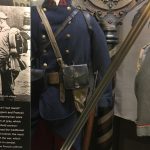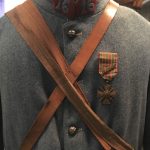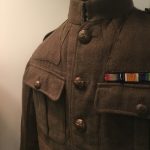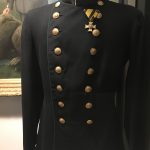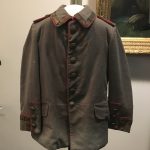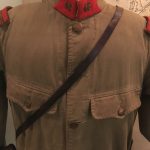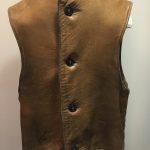The Concept: Zippers
By Drina McDonald
What do backpacks, jeans, wallets, and boots all have in common? They could really benefit from a working zipper. Today zippers are used for both fashion and function, but before the 1920’s they were an up-and-coming technology.
Elias Howe invented the “Automatic, Continuous Clothing Closure” in 1851. Howe also invented the sewing machine, however, his clothing-closure device failed to launch. In 1893, the “Clasp Locker” was invented by Whitcomb Judson. Although he is considered the inventor of the zipper, Judson never coined the term. It wasn’t until 1913 that the zipper was perfected by Gideon Sounback, to then be successfully marketed.
More commonly seen on bags and boots, it took nearly 20 years for the masses to incorporate the new fastener into their everyday clothing. However, the first World War exposed the convenience this tool provided.
When dressing for combat, soldiers typically had dozens of buttons to fasten and strings to tie. These buttons were usually decorative, made from bone or precious metals, and were engraved with their loyalties. The flashy nature of these buttons and outfits were designed to march for the king rather than through the battlefield, and soldiers quickly realized how visible these trinkets made them. The zipper was still a fresh integration into society during this time, therefore, World War 1 soldiers were not issued zippered uniforms.
Jerry Lakey volunteers at the World War 1 Museum in Kansas City, Missouri, and he says zippered memorabilia is very rare. There were no clothes or artifacts that had zippers on display, and none he could think of in the archives. Lakey fought with the Air Force during the Vietnam War and said that he did remember having zippers on at least his pants and his jackets.
Having zippers increased the numbers of fasters per inch from about four to 11, making it much easier to open and close things from either end; in other words, people could effortlessly dress and undress. This idea “promoted independence in children”, allowing them the more easily get ready by themselves. The zipper eliminated unwanted airflow and/or body-part exposure, and the “Battle of the Fly” in 1937 finally showed the world that the zipper was more than a novelty… it was a breakthrough.
The fashion industry has capitalized on zippers for the style, but the militia has capitalized on the function. Today, there are almost no buttons on a standard uniform. But that won’t stop us from appreciating the time took to make, and fasten, the buttons of our history.


